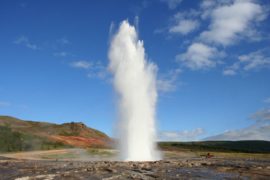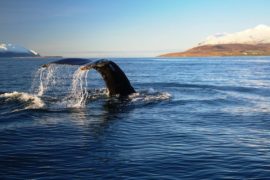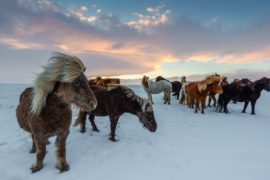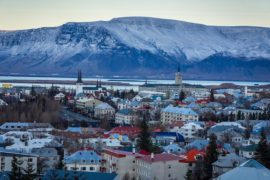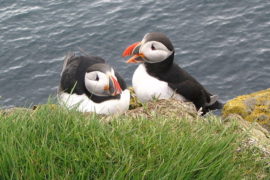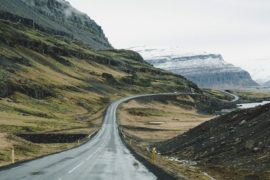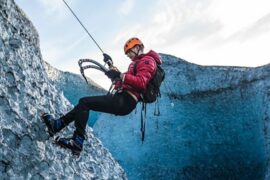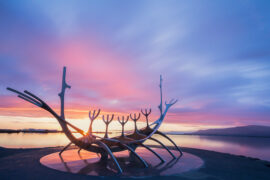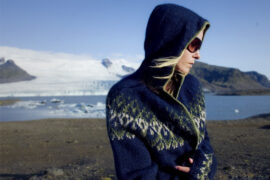There are few places on earth that can compete with Iceland in terms of natural beauty and phenomenal landscapes.
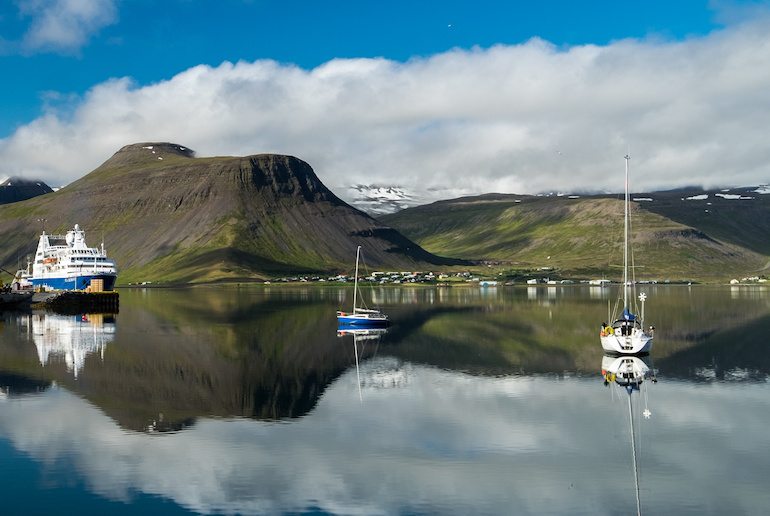
Geologically, it has just about everything – from remote black-sand beaches to erupting volcanoes, grassy plateaux where wild horses graze to snow-topped mountains, and bubbling hot springs.
Add to that moss-clad lava fields, fjords and boiling geysers, and you can see that the island really is a force of nature.
Are there fjords in Iceland?
Yes, Iceland’s rugged coastline is dotted with many fjords and narrow inlets surrounded by towering mountains.
The fjords were created during the last Ice Age, when the entire island was covered by glaciers.
Over time, the process of glaciation meant that these glaciers moved very slowly to form narrow V-shaped inlets that are open to sea.
And it is these narrow inlets, usually with steep mountains on either side, that we call fjords.
5 of the best fjord tours in Iceland
- Explore the wild West Fjords. We love this three-day tour of the West Fjords, that includes the ferry from the Snæfellsnes Peninsula to the West Fjords, puffin- and seal-spotting and the epic Dynjandi waterfalls.
- Kayak along Seydisfjordur and Hestfjordur. On this incredible full-day kayak trip, you’ll paddle along the two fjords on the Ísafjörður, looking out for whales and dolphins on the way.
- Go whale-watching on the Eyjafjörður. We love this boat trip along the Eyjafjörður, with nature guides to help you look out for humpback whales and other wildlife.
- Visit Siglufjörður. Fans of Icelandic crime drama Trapped may recognise the pretty town of Siglufjörður on the edge of the beautiful Siglufjörður. This private tour takes in stunning views of the Eyjafjörður, the majestic mountains and fjords of the Troll Peninsula and explores the village of Siglufjörður.
- Discover the caves of the Seydisfjordur. Sail into caves along the coastline of the Seydisfjordur and see the Skálanes nature reserve from the sea.
How many fjords are there in Iceland?
Although Norway is the country with the most fjords in the world, you may be surprised to learn that Iceland has 109 fjords.
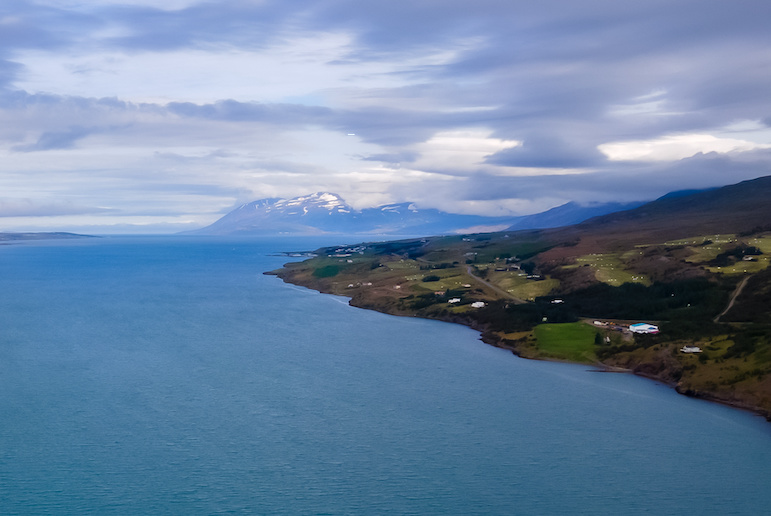
Some are large bodies of sea that stretch deeply back towards the mountains, such as Eyjafjörður. At 60km long, it’s Iceland’s longest fjord.
Others are smaller, narrow straits, such as Mjóifjördur – whose name means “narrow fjord” in Icelandic – which is a mere 18km long.
And, although Norway is the Nordic country that most people associate with fjords, Iceland’s fjords can certainly hold their own in terms of majestic mountains rising from deep narrow gorge-like fissures.
Where are Iceland’s fjords?
Iceland’s fjords lie mostly in the west of the island – the West Fjords – and the east of the country – the East Fjords.
There are also a few in the north, including Eyjafjörður, but none along the island’s less rugged south coast.
The West Fjords
The remote and wild West Fjords lie in the north west of Iceland. A jagged indented region almost completely surrounded by sea, it looks a bit like a separate island, but is actually connected to the mainland by a thin 10km strip of land.
We love its extreme geography, steep mountains, deep fjords, open vistas and gushing waterfalls – not to mention the cliffs where you can see puffins nesting and beaches where seals bask.
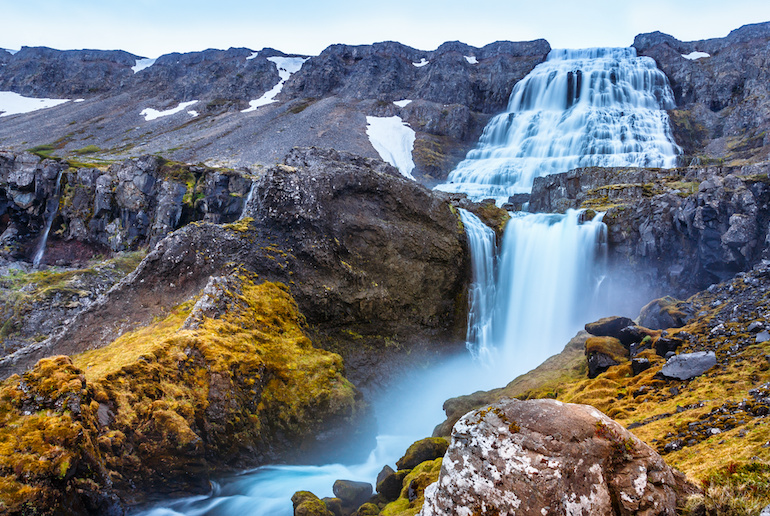
Driving around the West Fjords is slow and scenic as the roads zig-zag across plateaus and around fjords and mountains.
But this means that fewer visitors venture up to the farthest fjords – another reason, we think, to make the trip!
The Ísafjarðardjúp (its name means “deep, frozen fjord”) is one of the largest and most scenic fjords in the region, indented with numerous smaller fjords along its spectacular southern side.
One of Iceland’s most beautiful waterfalls, the Dynjandifoss sits at the head of the short Dynjandisvogur fjord. In fact, it consists of seven separate falls that cascade down the mountainside into the fjord.
If you want to see the highlights of the West Fjords without driving yourself, we like this half-day tour from the port of Ísafjörður to the Dynjandifoss waterfall, stopping in at an Icelandic farm on the way to learn about Icelandic farming in this remote region and sample some Icelandic hjónabandssæla – which means happy marriage cake!
And if you want to spend some in the region, we love the Hótel Laugarhóll, with great views and its own private thermal pool and hot tub.
Or, the Hótel Djúpavík has comfortable rooms with views over the Reykjafjörður and mountains, close to a historic former herring factory.
The East Fjords
In the far east of the island, the East Fjords run from the beautiful Borgafjörður Eystri in the north for about 120km down to the Berufjörður in the south.
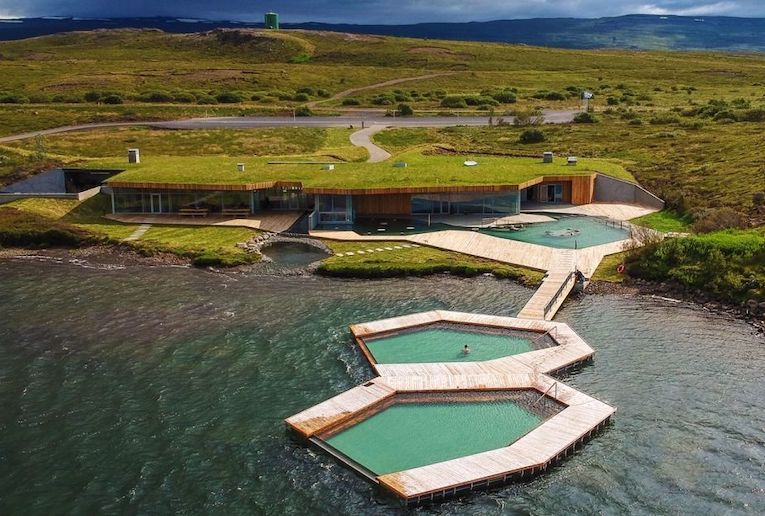
The fjords here aren’t as large as in the West Fjords, but their remote location, pretty fishing villages and dramatic mountain scenery mean that they are every bit as impressive as their western neighbours.
The appealing harbour town of Seyðisfjörður sits at the top of the long deep fjord of the same name and makes a good base for hiking and exploring the nearby waterfalls.
It’s also served by a weekly ferry from Hirtshals in Denmark via Tórshavn in the Faroe Islands.
A must-visit in the area is the geothermal Vök Baths, about 30 minutes inland from Seyðisfjörður, a series of hexagonal shaped pools that float on Lake Urriðavatn.
A little south of the fjords, the Skafatell National park is home to Europe’s largest glacier. The best way to see the Vatnajökull Glacier up close is to go hiking on it with an experienced guide.
If you want to stay, Seyðisfjörður makes a good base. The Hotel Aldan has rooms overlooking the fjord in three buildings in the village, the former post office, the old school house and the old bank.
The best fjords in Iceland
Of course, this is very subjective as the fjords vary enormously from wide sea-like expanses to narrow, deep gorges hemmed in by mountains. But here are some of our favourites anyway!
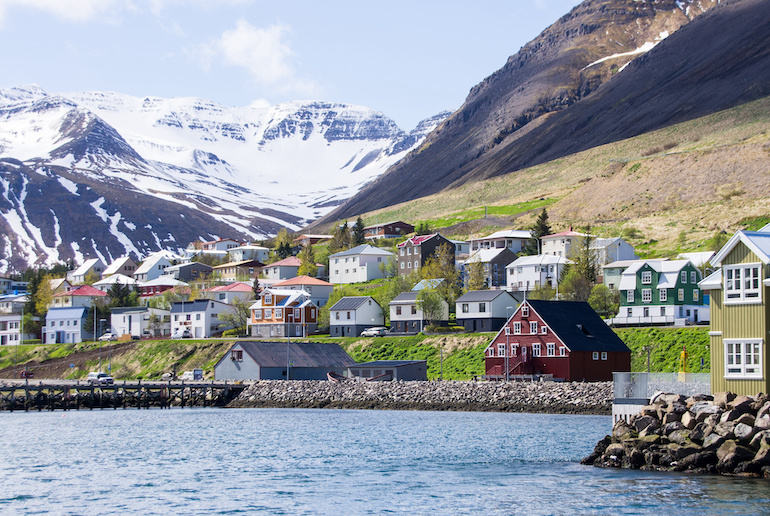
We really like Seyðisfjörður, for its pretty wooden buildings that spread along the deep narrow fjord, backed by snow-capped mountains, its excellent hiking and nearby puffin colony.
Eyjafjörður is another favourite. Iceland’s longest fjord, it’s filled with whales, dolphins and porpoises in the summer months and makes a great base for wildlife-watching.
This whale-watching trip from the small fishing village of Árskógssandur gives great views of the fjord and guarantees that you’ll see whales – if not, you get another trip for free.
In our opinion, Hvalfjörður, just north of Reykjavik, is also worth a visit. It may not be the most dramatic of the fjords, but it’s a peaceful place, ideal for bird-watching and close to Iceland’s second tallest waterfall, Glymur.
How to visit the fjords from Reykjavik
It is possible to visit some of the fjords by bus – route #57 runs at least once daily from Reykjavik to Akureyi at the head of the Eyjafjörður, taking around six hours.
However, most buses round the island take the main ring-road, and miss out the long indented but scenic roads that run alongside the fjords.
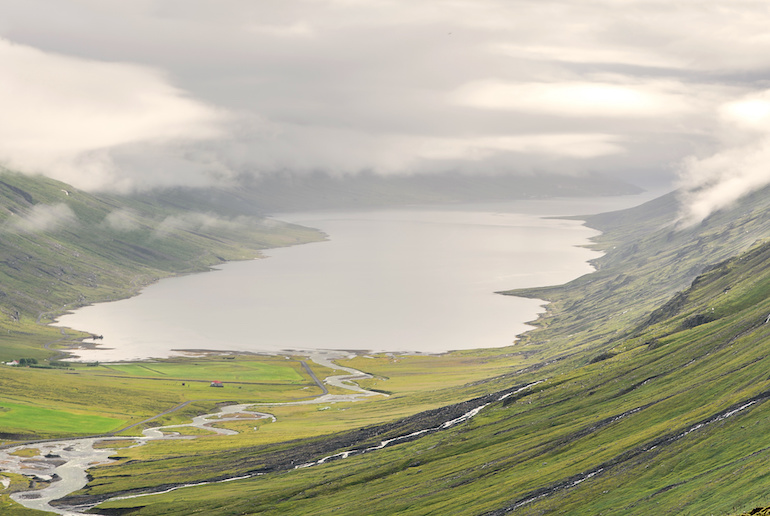
We think that your best bet is to drive, so that you can stop off where you want and really get off-the-beaten-track. For more on the dos and don’ts of car rental in Iceland, click here.
It takes less than three hours to drive from Reykjavik to the town of Króksfjarðarnes at the entrance to the West Fjords, but once you’re off the main road, it takes another three (very scenic!) hours to get to the town of Ísafjörður.
An alternative route is to take the ferry from Stykkishólmur on the Snæfellsnes peninsula to Breiðafjörður in the West Fjords. It’s not cheap and it won’t save you any time, but it’s a fun way to travel.
The town of Egilsstaðir is the gateway to the East Fjords, and this takes about eight hours to drive, following Route #1 all the way.
Why you should check out the fjords
Iceland is not just about volcanoes, thermal pools and mountains – we think its fantastic fjords are also very much worth exploring.
Edged with steep snow-clad mountains and dotted with pretty fishing villages, Iceland’s fjords showcase the country’s unique geography and encompass some of its most dramatic landscapes.
And if you want to know more about exploring some of the other lesser-known parts of this amazing country, check out our guides to What to see and do in Northern Iceland and Self-drive tours in Iceland.
See also:
Where and when to see puffins in Iceland
The best hot spring hotels in Iceland
Ice-climbing in Iceland

